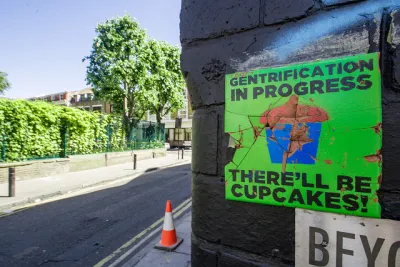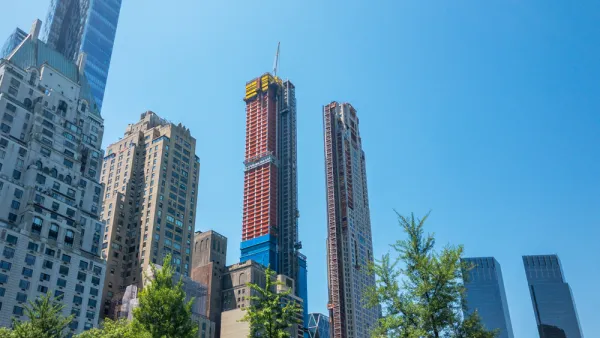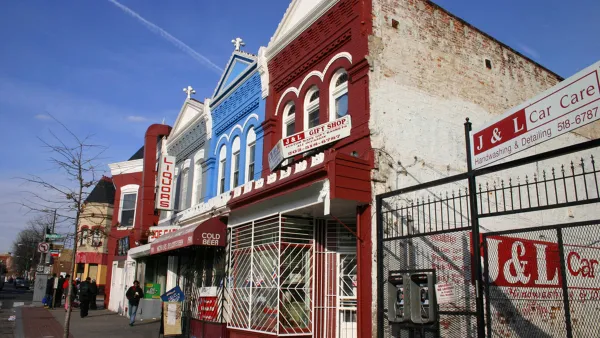The conversation about gentrification continually repackages a set of debunked theories as reality and it obscures a set of real crises that need fixing.

Gentrification has become a functionally useless term.
I don’t know when exactly I reached my breaking point on this issue, though I have been gradually phasing it out over four-plus years of studying neighborhood change. My guess is that it came somewhere between a ridiculous 2019 Jacobin article that claimed that graphic novels “are comic books, but gentrified,” or the turn in this summer’s Black Lives Matter protests when I started watching white people my age parade through Brooklyn screaming “fire, fire, gentrifier.” Whether they arrived here by birth or migration was impossible to tell, but at any rate it would have been impossible for them not to have ridden here on the ongoing “gentrification” wave that originated in the 1980s. If only we millennials had the ability to own our glass houses like so many NIMBY boomers did.
This is all to say that we have a major problem with how we talk about gentrification in this country, a fact true for people all across the political spectrum. First, because the conversation continually repackages a set of debunked theories as reality, and second, because it obscures a set of real crises that need fixing, namely, neighborhood-level inequality, the disappearance of affordable housing, and wages that have lagged behind the rising cost of shelter.
Let’s start by separating gentrification theory from reality. I’ll begin with the common narrative of gentrification, in which wealthy white people and developers move into poor neighborhoods and neighborhoods of color, directly displacing residents with the erection of new, fabulous apartments. This theory was introduced to the U.S. in the 1970s by geographer Neil Smith, but again it was a theory for explaining a new demographic pattern of people moving back to the city from suburbs—a hypothesis unconfirmed, something to be tested. Study after study that has tested it since, the best among them coming from scholars like Lance Freeman and Ingrid Gould Ellen (also, the Federal Reserve) find the theory insufficient.
Beginning with displacement, in a 2005 study covering over 31,000 households from 1980 to 2000, Freeman found that “mobility out of gentrifying neighborhoods is not necessarily dramatically different from mobility out of other neighborhoods.”
A little over a decade later, Ellen also found no significant differences in mobility among low-income residents who lived in gentrifying neighborhoods when tracking over 35,000 New York City children enrolled in Medicaid and who lived in market-rate apartments from 2009 to 2015.
Lastly, Quentin Brummet and Davin Reed, writing in 2019 for the Federal Reserve Bank of Philadelphia, found “moderate,” 4-6 percentage-point increases in mobility rates among less advantaged residents of gentrifying neighborhoods from 2000-2014 (the baseline mobility rate among all renters in the study was 70-80 percent), using a sample population of over 170,000 adults and children and a definition of gentrification based on educational attainment. Rather optimistically, their study also suggested that people who did move from gentrifying neighborhoods seldom ended up in worse-off locations, and that gentrification “creates some important benefits for original resident adults and children and few observable harms.” I’ll offer more on the half-truthfulness of this statement later on.
Next I’ll tackle race, where data along the Black-white fault line of urban segregation runs almost exactly counter to Smith’s theory: It has been the rare exception ...
FULL STORY: “Gentrification” Is Not the Real Problem

National Parks Layoffs Will Cause Communities to Lose Billions
Thousands of essential park workers were laid off this week, just before the busy spring break season.

Retro-silient?: America’s First “Eco-burb,” The Woodlands Turns 50
A master-planned community north of Houston offers lessons on green infrastructure and resilient design, but falls short of its founder’s lofty affordability and walkability goals.

Delivering for America Plan Will Downgrade Mail Service in at Least 49.5 Percent of Zip Codes
Republican and Democrat lawmakers criticize the plan for its disproportionate negative impact on rural communities.

Test News Post 1
This is a summary

Test News Headline 46
Test for the image on the front page.

Balancing Bombs and Butterflies: How the National Guard Protects a Rare Species
The National Guard at Fort Indiantown Gap uses GIS technology and land management strategies to balance military training with conservation efforts, ensuring the survival of the rare eastern regal fritillary butterfly.
Urban Design for Planners 1: Software Tools
This six-course series explores essential urban design concepts using open source software and equips planners with the tools they need to participate fully in the urban design process.
Planning for Universal Design
Learn the tools for implementing Universal Design in planning regulations.
EMC Planning Group, Inc.
Planetizen
Planetizen
Mpact (formerly Rail~Volution)
Great Falls Development Authority, Inc.
HUDs Office of Policy Development and Research
NYU Wagner Graduate School of Public Service





























